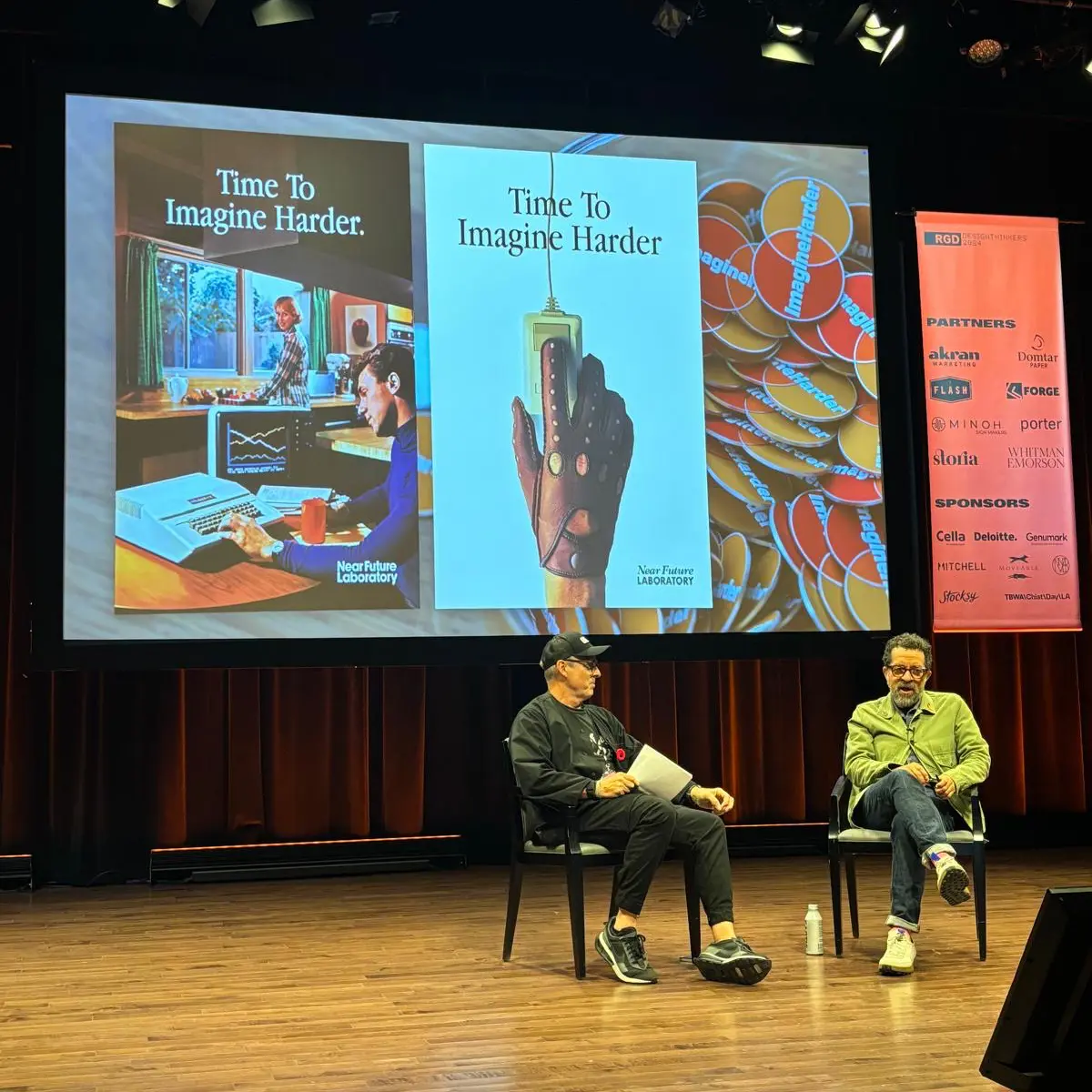
Ian Chalmers and I did a Fireside Chat sort of thing at the 2024 RGD Conference. It gave us a chance to explore the concept of Design Fiction with an audience of graphic designers, design researchers, and other sorts of visual storytellers who show up at these practice-based conferences.
These are the slides I shared during the talk.
Our conversation revolved around how Design Fiction helps us think critically about the future by approaching it as a place that exists in glimpses today. Much like an archaeologist digging into a past yet to be fully understood, we piece together visions of potential futures through artifacts, imagination, and storytelling.
One topic that sparked a lot of interest was the concept of “Imagining Harder,” inspired by a playful reimagining of Apple’s famous ‘Think Different’ campaign. We discussed how this approach invites us to look beyond the surface of today’s trends and consider alternative futures through the artifacts we create—even if it’s something as mundane as an employee handbook from a parallel world.
The chat also touched on the Futures of Work / Imagine Harder Workshop & Summit I hosted recently in Detroit. I described how we gathered to ideate, develop, and create artifacts that imagine how work might evolve—considering everything from remote working challenges to shifts in value creation in a changing world. The main artifact we were working towards was something like an employee handbook from the future. The way these things work is that we workshop & ideate and then I take the materials back and a few of us focus on embedding these ideas, idioms, artifacts and such into something that looks like an employee handbook implying many of the ideas we came up with in the workshop.
For those new to Design Fiction, I encouraged starting by imagining future products or services that feel just a little out of place in today’s world. The idea is not to go overboard with sci-fi tropes like moonbases but rather to focus on subtle differences that make a familiar product feel like it’s arrived from a slightly different timeline.
If you want to dive deeper, take a look at “The Manual of Design Fiction” and “TBD Catalog” as well as “It’s Time To Imagine Harder” all of whcih offer more insights into the practical applications of this imaginative practice.